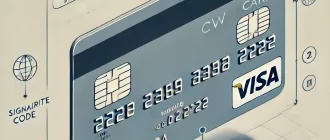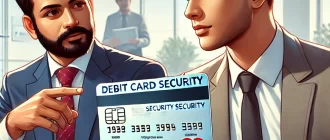Located in the heart of New York, CVVCode Restaurant offers an unparalleled dining experience that blends modern elegance with exquisite culinary artistry. Our menu features a carefully curated selection of dishes prepared with the finest ingredients, ensuring every bite is a masterpiece of flavor and texture. Whether you’re looking for a casual meal, a romantic dinner, or a gathering with friends, CVVCode provides the perfect setting for an unforgettable experience.
Why Choose CVVCode Restaurant?
- Exquisite Cuisine: Our chefs craft every dish with passion, using fresh and high-quality ingredients.
- Elegant Atmosphere: Enjoy a stylish and inviting ambiance that enhances your dining experience.
- Exceptional Service: Our attentive staff ensures that every guest feels welcome and valued.
- Diverse Menu: From gourmet appetizers to decadent desserts, our menu caters to every palate.
Signature Dishes
Our menu is a celebration of culinary excellence, featuring a variety of signature dishes that highlight bold flavors and creative presentation.
- Grilled Filet Mignon: A tender, juicy steak cooked to perfection and served with a rich red wine reduction.
- Seafood Risotto: A creamy, flavorful dish packed with fresh shrimp, scallops, and mussels.
- Truffle Pasta: Handmade pasta infused with aromatic truffle oil and topped with Parmesan.
- Classic New York Cheesecake: A velvety smooth dessert that is the perfect ending to any meal.
A Commitment to Excellence
At CVVCode Restaurant, we are committed to delivering an exceptional dining experience. Our chefs are passionate about creating innovative dishes, while our staff is dedicated to providing outstanding service. We strive to make every visit special, ensuring that guests leave with unforgettable memories and a desire to return.
Visit CVVCode Restaurant Today
Whether you’re celebrating a special occasion or simply enjoying a night out, CVVCode Restaurant is the perfect destination for fine dining in New York. Immerse yourself in an atmosphere of sophistication, indulge in expertly crafted dishes, and experience the best that modern dining has to offer.
“CVVCode Restaurant is where culinary artistry meets impeccable service—creating moments of pure indulgence.”
Customer Reviews for CVVCode Restaurant
Maria Gonzalez
The food at CVVCode is absolutely fantastic! The flavors are rich, and the service is outstanding..
James Carter
Great ambiance and delicious food. The portions were generous, though the wait time was a bit long.
Sophia Martinez
CVVCode is my go-to restaurant for fine dining! The filet mignon is a must-try.
Oliver Brown
The food was good, but I found the truffle pasta a little too rich for my taste. Still a great experience.
Emily Davis
Amazing service, and the seafood risotto was incredible. Highly recommend this place!
Daniel Wilson
Great food and stylish decor. The New York cheesecake was the best I’ve ever had.
Isabella Johnson
The grilled filet mignon was cooked perfectly. Definitely coming back!
William Thompson
Good flavors, but the service was a bit slow. I’ll give it another try.
Ava Martinez
Absolutely love this place! The ambiance and food are top-notch.
Liam Rodriguez
The seafood dishes are outstanding. A little pricey, but worth it.
Charlotte Anderson
Best fine dining experience I’ve had in years! Everything was perfect.
Lucas Walker
The flavors were good, but I felt the portion sizes were a bit small.
Amelia Perez
The truffle pasta was out of this world! Highly recommend this spot.
Ethan Scott
The food was great, but the noise level was a bit high for my liking.
Harper Rivera
Fantastic service and delicious dishes. Will be back soon!
Mason Sanchez
Good food, but I expected more variety on the menu.
Emily Carter
Amazing food and excellent service! The ambiance is perfect for a night out.
Jackson Rivera
Great selection of wines and the steak was cooked to perfection.
Samantha Brooks
The truffle pasta was absolutely delicious! Will definitely be coming back.
Ethan Johnson
Good food, but the wait time was longer than expected.
Ava Richardson
Perfect spot for a romantic dinner. The dessert menu is to die for!
Daniel Scott
Excellent seafood options, but the portions could be a bit larger.
Sophia Bennett
The ambiance and decor were stunning! Food was exceptional.
Michael Turner
Food was good but a little pricey for what you get.
Jessica Lopez
Outstanding service and the cocktails were amazing!
Henry Wilson
Great experience, but the dessert options were limited.
Emma Clark
Best steak in town! The atmosphere is so elegant.
Oliver Martinez
The pasta dishes are delicious, but the service was a bit slow.
Amelia Foster
Incredible flavors! Everything was cooked to perfection.
Noah Adams
Nice place, but the seating was a bit cramped.
Chloe White
The flavors were amazing, and the presentation was beautiful.
Lucas Green
Great place to dine with family. The fish dishes were excellent.
Harper Nelson
The service was beyond amazing, and the food was divine.
Benjamin Hall
Nice ambiance, but the wait time was a bit long.
Charlotte Evans
Absolutely loved the food and atmosphere. The steak was cooked perfectly!
Samuel Roberts
The seafood pasta was delicious, but the portion could have been larger.
Isabella Reed
The desserts were divine! The chocolate lava cake was the highlight of my night.
Matthew Carter
Good experience overall, but the service was a bit slow.
Emma Sullivan
The best fine dining experience I’ve had in a long time!
Lucas Mitchell
The cocktails were incredible, and the staff was very friendly.
Olivia Foster
My go-to restaurant for special occasions. Never disappoints!
Noah Parker
The food was tasty, but I expected a bit more variety on the menu.
Grace Hall
Such a warm and welcoming atmosphere. The risotto was amazing!
Jack Turner
The ambiance was stunning, and the food was delicious.
Ella Watson
Best filet mignon I’ve ever had! Highly recommend.
Benjamin Hughes
Everything was great, but I wish they had more vegan options.
Sophia Nelson
The perfect blend of flavors. Can’t wait to come back!
Liam Bennett
Nice place, but the noise level was a little high.
Hannah Coleman
Every dish was a masterpiece. Loved the presentation!
Owen Adams
The seafood was so fresh! A must-visit spot.
Ava Rogers
The staff was so kind and accommodating. Five stars!
Henry Clark
Good food, but a bit overpriced.
Mia Cooper
Amazing flavors, beautiful decor, and outstanding service.





